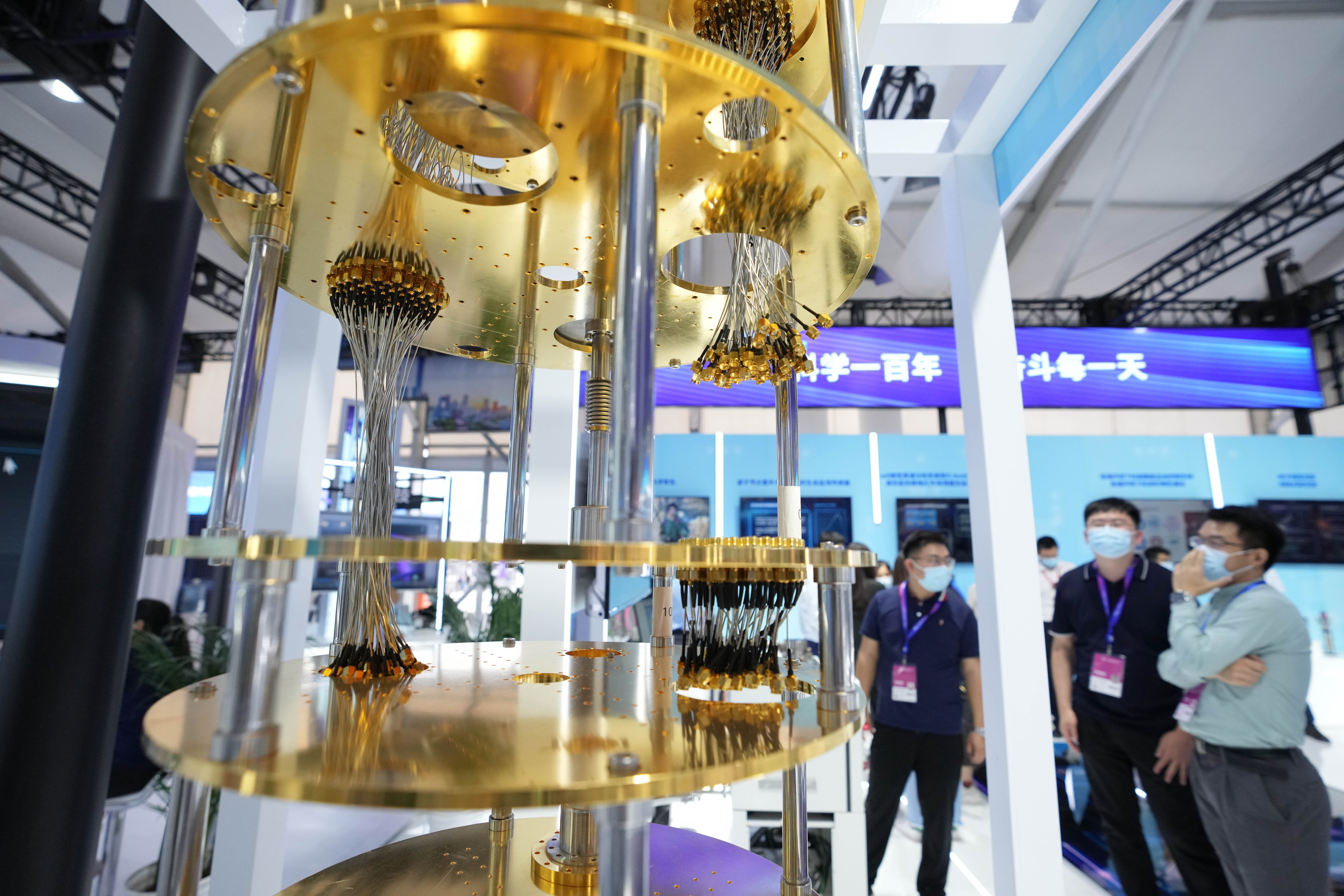New and High Tech Industrialization Shines
A cryofree dilution refrigerator displayed at the Zhongguancun Forum exhibition in Beijing. (PHOTO: XINHUA)
By LU Zijian
After more than 30 years, national hi-tech zones have become hubs for innovation, industries, talent and openness, making huge contributions to China's economic rise. In 2020, the GDP of 169 national hi-tech zones reached 13.6 trillion RMB, accounting for about 13 percent of the country's GDP.
There are many shining examples that indicate how small start-ups evolve into business giants in national hi-tech zones.
Hi-tech zones become cluster for transformation of sci-tech achievements
The research and development (R&D) investment of enterprises in national hi-tech zones comprises half of that of companies all around China. Every 10,000 employees in national hi-tech zones own 388 invention patents, more than ten times higher than the national average.
Both the investment and the output show that national hi -tech zones are clusters of innovation.
As China's first hi-tech zone and first national innovation demonstration zone, Zhongguancun (ZGC) has made significant achievements in terms of transformation of sci-tech achievements.
At the opening ceremony of the 2021 International Technology Trade Fair on ZGC Forum on September 27, Xu Qiang, director of Administrative Commission of Zhongguancun Science Park, said that ZGC harbors around 10 percent of national hi-tech enterprises.
The total revenue of the companies in ZGC reaches 7.2 trillion RMB, making up one-sixth of enterprises in all national high-tech zones. The added value of ZGC hit 1.04 trillion RMB, consisting 29.4 percent of Beijing's GDP.
These achievements were well supported by the central and local governments.
Support from central government
China has been working on improving the transformation and commercialization of sci-tech achievements by creating laws and regulations and offering financial assistance.
As early as 1996, China issued a law on promoting the transformation of scientific and technological achievements. A revised version of the law was enacted in 2015, with two corresponding regulations issued the following year. The trio greatly helped to improve the transformation of scientific and technological achievements by encouraging R&D institutes and institutions of higher education to transfer sci-tech achievements to enterprises or other organizations, incentivizing sci -tech personnel to start businesses, and creating a good environment for the transformation and transfer of sci-tech achievements.
Financial assistance is also provided by the government.
According to Enterprise Income Tax Law of the People's Republic of China, the enterprise income tax rate shall be reduced to 15 percent for state-encouraged high -tech enterprises; the enterprise income tax may be exempted from or reduced for incomes gained from the transfer of technologies, which meets the relevant requirements.
In 2015, the National Fund for Technology Transfer and Commercialization was jointly launched by the Ministry of Science and Technology and the Ministry of Finance, aiming to accelerate the transformation and application of sci-tech achievements. Since its foundation, the fund has set up more than 30 venture capital sub -funds with almost 50 billion RMB, which has grown more than four-fold from the original amount.
All the measures taken have contributed to the progress made concerning transformation of sci-tech achievements.
Promoting indigenous features
Local governments at all levels also issued regulations to promote such transformation with specific features unique to the place.
In 2018, Guangxi Zhuang Autonomous Region revised the local regulations for transformation of sci -tech achievements. The new version of the regulations specifically mentioned the cooperation between China and ASEAN countries, where Guangxi has an advantage. Thanks to the China-ASEAN Technology Transfer Center, which is located in Nanning, capital of Guangxi, the activities of transformation of sci-tech achievements between China and ASEAN countries are frequent and effective.
Article 13 of the newly revised regulations noted that the joint working group and information exchange platform targeting ASEAN countries need to be improved to promote mutual technology transfer and transformation of sci-tech achievements.
Yunnan Province, on the other hand, shed light on the transformation of sci-tech achievements for the public good. Many achievements have been made in new species of crops and new technologies of agricultural production and promoted to peasants in the province. Previously, there was no reward for R&D personnel from such transformation, which was not good for the stability of research talent and further research work.
The new regulations propose several approaches to support transformation projects for the public good, which can not only drive the incentive of institutions and people that own the sci-tech achievements to transform, but also encourages more transformation of sci-tech achievements to be applied for the public good.
Compared with that of developed countries, the transformation rate of sci-tech achievements in China is still not ideal, but the country is catching up.


